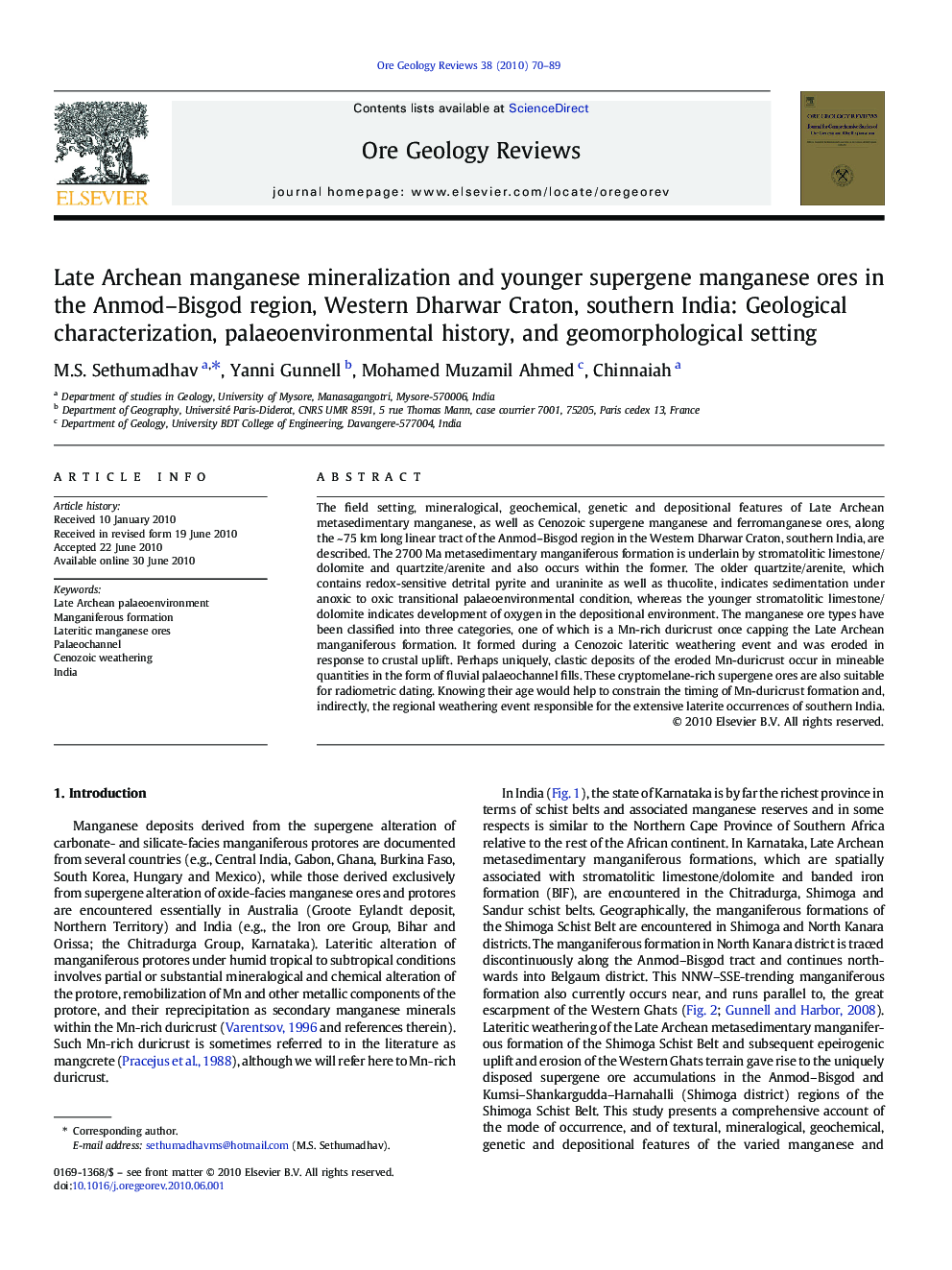| Article ID | Journal | Published Year | Pages | File Type |
|---|---|---|---|---|
| 4697844 | Ore Geology Reviews | 2010 | 20 Pages |
Abstract
The field setting, mineralogical, geochemical, genetic and depositional features of Late Archean metasedimentary manganese, as well as Cenozoic supergene manganese and ferromanganese ores, along the ~Â 75Â km long linear tract of the Anmod-Bisgod region in the Western Dharwar Craton, southern India, are described. The 2700Â Ma metasedimentary manganiferous formation is underlain by stromatolitic limestone/dolomite and quartzite/arenite and also occurs within the former. The older quartzite/arenite, which contains redox-sensitive detrital pyrite and uraninite as well as thucolite, indicates sedimentation under anoxic to oxic transitional palaeoenvironmental condition, whereas the younger stromatolitic limestone/dolomite indicates development of oxygen in the depositional environment. The manganese ore types have been classified into three categories, one of which is a Mn-rich duricrust once capping the Late Archean manganiferous formation. It formed during a Cenozoic lateritic weathering event and was eroded in response to crustal uplift. Perhaps uniquely, clastic deposits of the eroded Mn-duricrust occur in mineable quantities in the form of fluvial palaeochannel fills. These cryptomelane-rich supergene ores are also suitable for radiometric dating. Knowing their age would help to constrain the timing of Mn-duricrust formation and, indirectly, the regional weathering event responsible for the extensive laterite occurrences of southern India.
Keywords
Related Topics
Physical Sciences and Engineering
Earth and Planetary Sciences
Economic Geology
Authors
M.S. Sethumadhav, Yanni Gunnell, Mohamed Muzamil Ahmed, Chinnaiah Chinnaiah,
